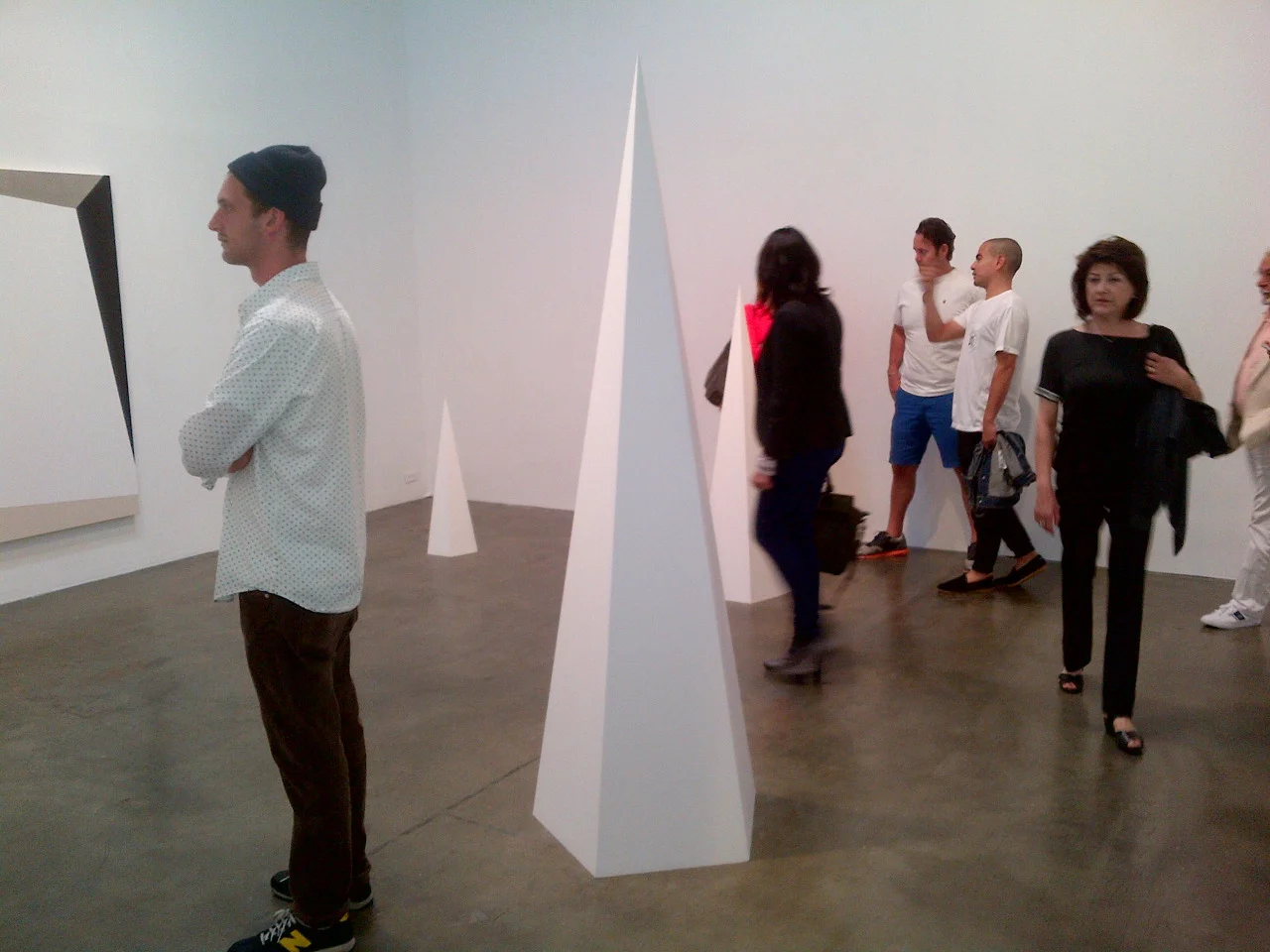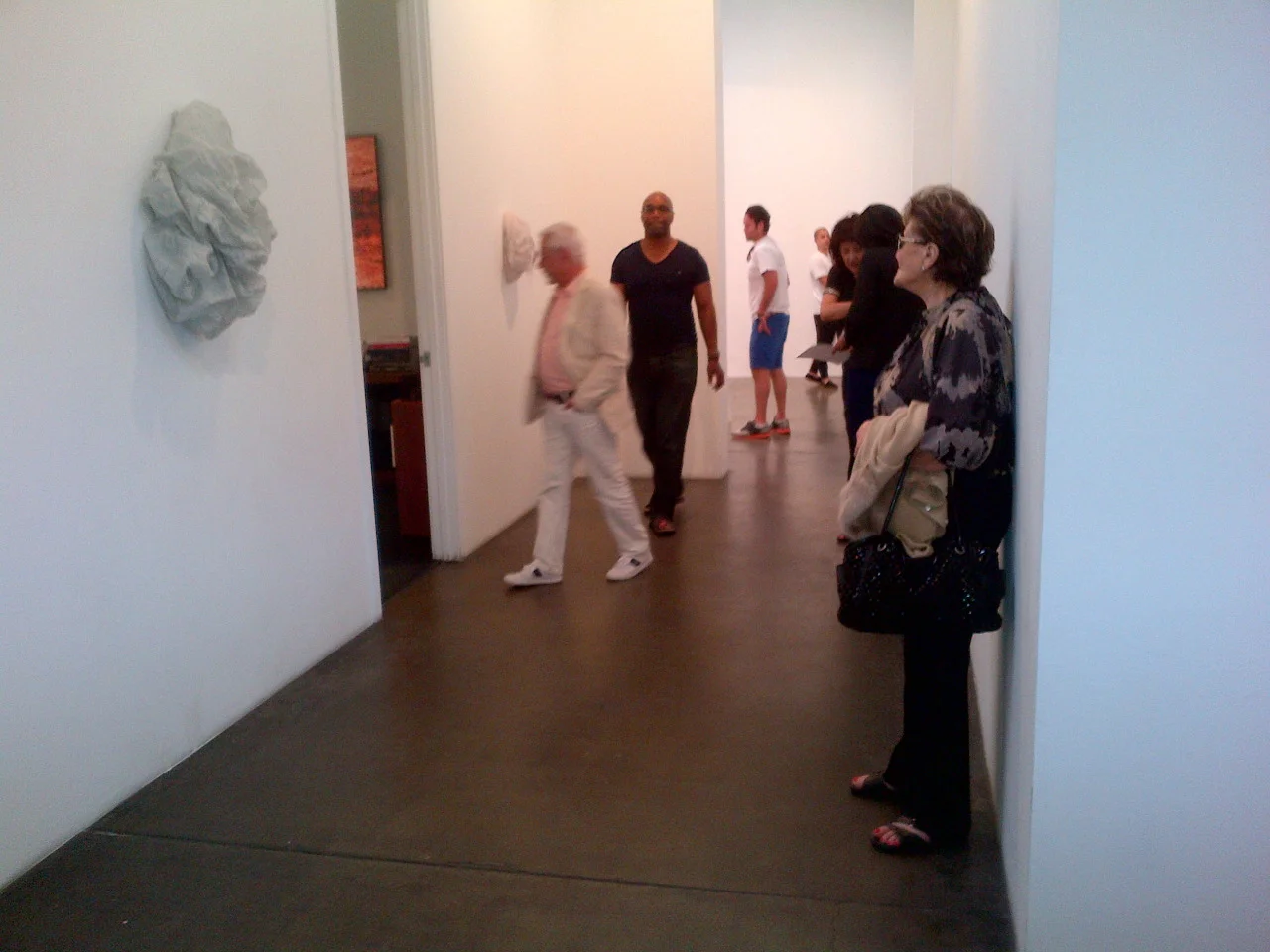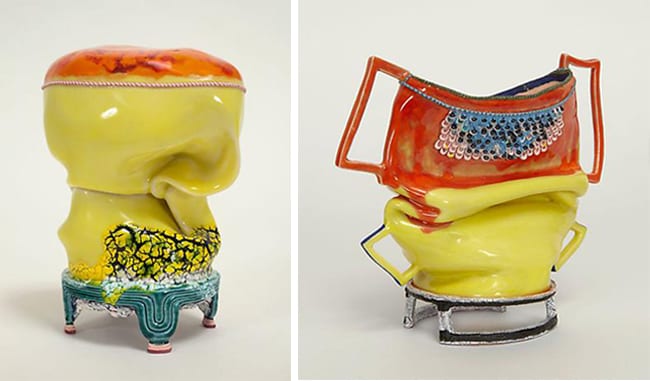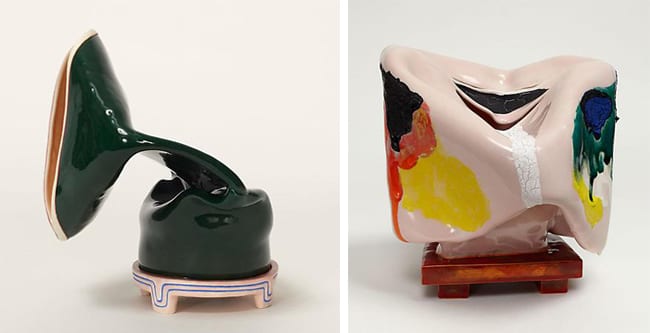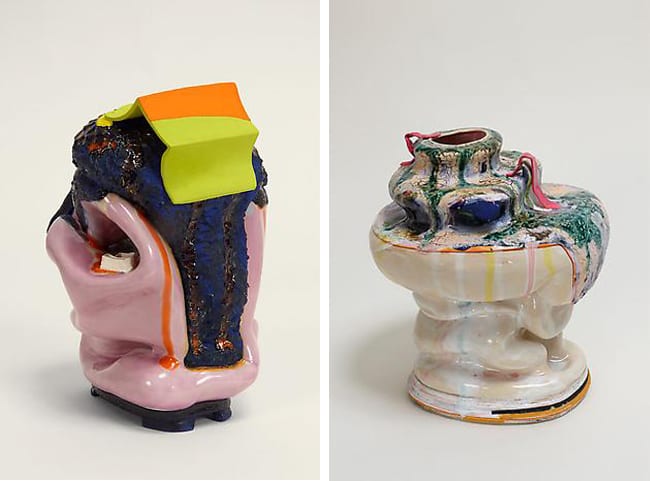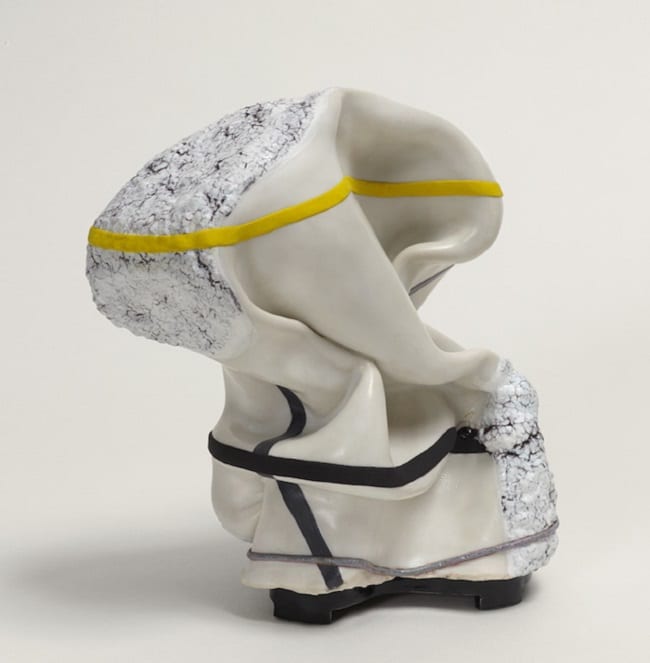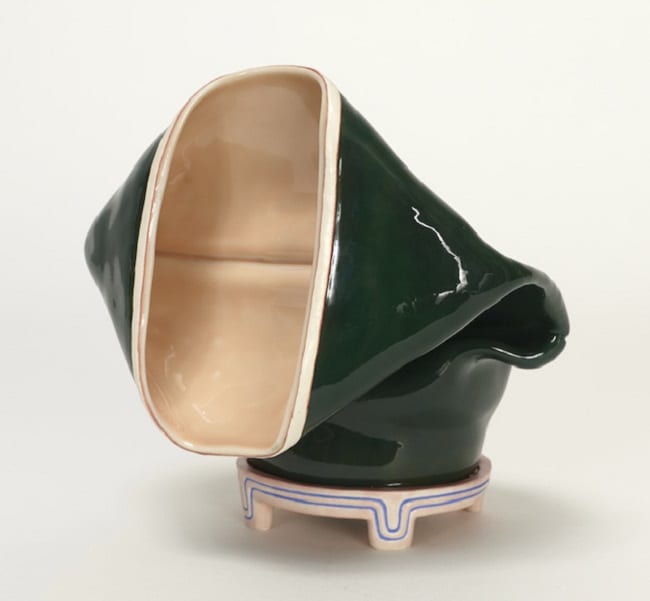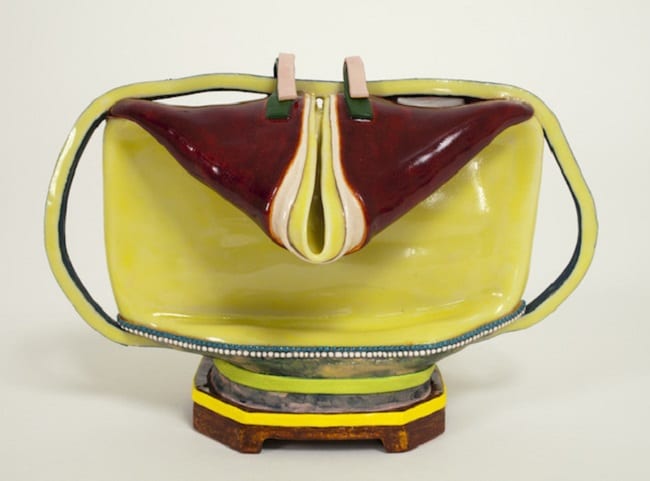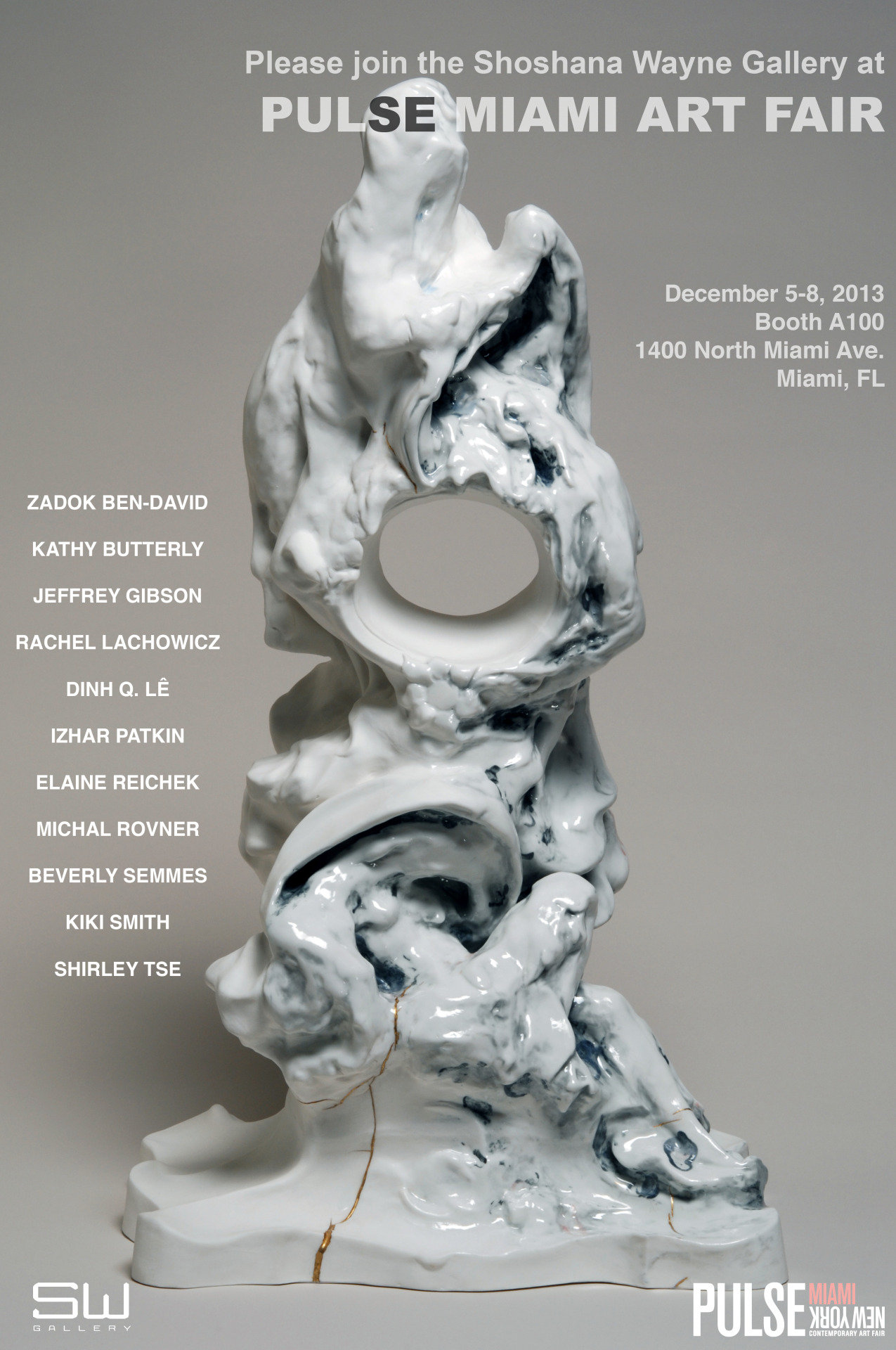Hunter Drohojowska-Philp finds much to admire in new show of contemporary abstract painting
First Clue: Sculpture and video are both featured in this exhibition exploring abstract painting. Why? Because the curators are presenting “Conversations in and around Abstract Painting,” on view through March 22. As in any conversation, varying views come into play and, one may agree or disagree. It is an agreeable way to pass the time in any case, especially since most of the works on view belong to LACMA. Like most museums, LACMA does not have the gallery space to keep everything on view so this is an opportunity to see new aspects of their expanding collection of contemporary art.

A pivotal example is a four-sided bench upholstered in zebra skin with a gathering of plants and a four-sided open black diamond shape in the center by Rashid Johnson, who is about to have a solo show at David Kordansky Gallery. Four for the Talking Cure (2009-2012) was originally made as a place where people could sit and discuss his work. Now owned by LACMA, that is no longer possible but the idea of this exhibition does follow. What do we mean when we talk about abstract art?

The opening salvo from LACMA curators Franklin Sirmans and Nancy Meyer is St. Andrew (1988), a squeeged smear in the colors of blood and chocolate by Gerhard Richter, the German artist who has done so much to complicate the discussions on the meaning of painting. Purchased by LACMA when it was made, it is one of the earliest pieces in the show. In the ‘90s, LACMA purchased a large raw canvas covered in drawn shapes in charcoal, some of which are filled with color, by Laura Owens, another artist who consistently demands more from her painting.

Most of the other works in the show are much more recent, with a hefty percentage being artists from L.A. who now have a significant international presence: Mark Grotjahn, with his paintings of carefully distributed layers of increasingly baroque color as well as two cast bronze masks; Sterling Ruby, with his peculiarly L.A. day-glo landscapes made with spray paint but also his grafitti covered wall operating as pedestal for ceramics; Analia Saban, with her white paintings that document their own process of becoming or unbecoming along with a her white marble Kohler countertop mounted on raw canvas, (a gift from John Baldessari); Mark Bradford, with enormous recent paintings, is concerned with issues of mapping both geographic and historic.

Anthony Pearson brings a refined formalist instinct to his work in non-traditional materials such as subtle shades of gray plaster held in a thin walnut frame; Rachel Lachowicz filled shaped plexiglas containers with variants of blue cosmetic powder — eye shadows! — to construct a powerful wall of geometric abstraction. There is an earlier work, a trio of small urinals made from lipstick. Mary Weatherford’s enticing abstraction melds the flowing paints of color field artists with the mysterious voids of caverns. All this from LA and more: Aaron Curry’s painted sculpture, Diana Thater’s video, it goes on and on.

While there are powerful works by artists who are not living in on the left coast — Theaster Gates, Christopher Wool, Albert Oehlen, Amy Sillman, Howardina Pindell and many others — a conversation about abstract painting is being held in earnest in L.A., which has never been held in high esteem for its traditional painting, abstract or not. It now seems that L.A. artists have re-invented the subject in ways that reflect this area’s ideational as well as pictorial sensibilities. Conceptual abstraction, if you will, is a way for artists to continue to explore the painting of previous generations but to re-interpret it in a way that is newly meaningful. It is an ongoing conversation but this show is a welcome part of it.

The show opens to members today, August 21, and to the public on Sunday. For more information, go to lacma.org.





